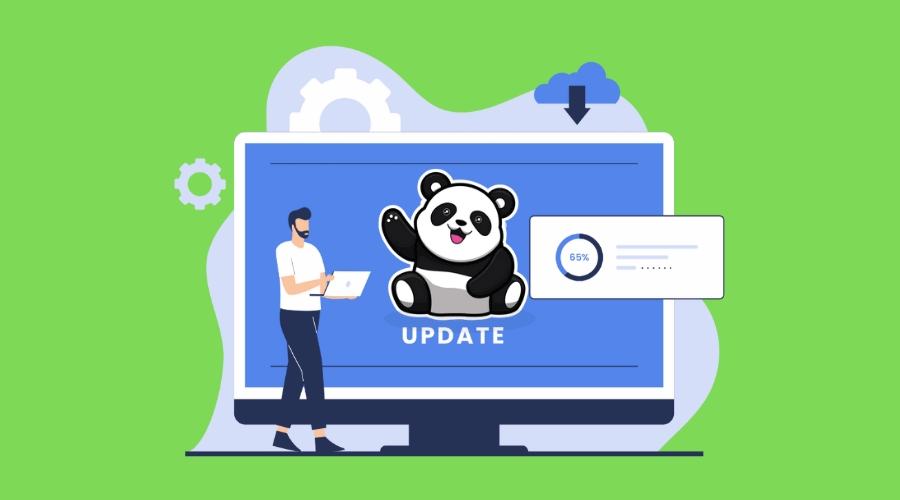Google Panda Update has been a pivotal algorithmic change that revolutionized the way search engines rank web content. Launched in February 2011, it aimed to enhance user experience by penalizing low-quality websites and rewarding high-quality, relevant content. In this blog, we’ll delve into the intricacies of the Panda Update, its objectives, impact, and strategies to navigate its effects.
Table of Contents
What is the Google Panda Update?
Google Panda Update, named after one of Google’s engineers, Navneet Panda, is an algorithmic filter aimed at improving the quality of search results by penalizing websites with low-quality or thin content. It specifically targets content farms, scraper sites, and pages with high ad-to-content ratios, among other factors.
Objectives of the Panda Update
Enhance User Experience
By prioritizing high-quality content, Google aims to provide users with more relevant and valuable search results, improving overall user satisfaction.
Combat Content Farms
Content farms churn out low-quality, often plagiarized content to manipulate search rankings. Panda penalizes such sites, promoting original, informative content.
Reduce Spammy Practices
Websites employing spammy tactics like keyword stuffing and irrelevant content face penalties, fostering a more transparent and trustworthy online ecosystem.
Encourage Quality Content Creation
Panda incentivizes website owners to focus on creating valuable, engaging content that resonates with their audience, rather than gaming the system with black hat SEO tactics.
Impact of Google Panda Update
- Ranking Fluctuations: Websites experienced significant fluctuations in search rankings following the rollout of Panda updates, with some witnessing a boost in visibility due to improved content quality, while others faced penalties for thin or duplicate content.
- Traffic Losses: Sites with low-quality content saw a decline in organic traffic as they were pushed down in search results or even deindexed. This prompted webmasters to reevaluate their content strategy and make necessary improvements.
- Content Evaluation: Webmasters had to reassess their content quality, relevance, and uniqueness to align with Google’s standards. This led to a shift towards producing original, in-depth content that adds value to users.
- Algorithm Updates: Google periodically updates the Panda algorithm to refine its effectiveness and address emerging SEO trends and spam tactics. Webmasters must stay updated with these changes to maintain or improve their search visibility.
- Focus on Quality: Prioritize creating high-quality, relevant content that addresses user intent and provides valuable insights or solutions.
- Conduct Content Audits: Regularly audit your website’s content to identify and remove low-quality or duplicate content. Invest in updating and optimizing existing content to keep it fresh and valuable.
- Improve User Experience: Ensure your website offers a seamless user experience with fast loading times, mobile optimization, intuitive navigation, and clear calls-to-action.
- Avoid Black Hat SEO Tactics: Steer clear of shady SEO practices like keyword stuffing, cloaking, and link schemes, as they can trigger Panda penalties and harm your site’s reputation.
- Build Authority: Establish your website as an authority in your niche by consistently delivering valuable, expertly curated content that earns backlinks and social shares.
Impact of Google Panda Update on Famous Websites
EzineArticles
EzineArticles, a prominent article directory, witnessed a substantial decline in traffic and search rankings post-Panda Update. The platform’s reliance on low-quality, keyword-stuffed articles led to its devaluation by Google. To recover, EzineArticles had to overhaul its content guidelines and improve the quality of submissions.
HubPages
HubPages, a user-generated content platform, faced a decline in traffic and rankings due to its vast volume of user-generated articles, some of which were of low quality or duplicate content. Implementing stricter quality control measures, including manual content reviews, was essential for HubPages to regain its search visibility.
Associated Content (now Yahoo! Contributor Network)
Associated Content, known for its content farm practices, suffered a significant blow from the Panda Update. Google devalued many of its pages, leading to decreased traffic and search visibility. In response, Associated Content (later rebranded as Yahoo! Contributor Network) shifted its focus towards producing higher-quality, original content.
Demand Media (now Leaf Group)
Demand Media, notorious for its mass production of low-quality, keyword-optimized articles, was heavily impacted by the Panda Update. Google devalued a large portion of Demand Media’s content, resulting in a sharp decline in traffic and revenue. To recover, Demand Media had to overhaul its content strategy, focusing on creating more valuable, in-depth articles.
These examples illustrate the profound impact of the Google Panda Update on famous websites, prompting them to reassess their content quality and adopt strategies to comply with Google’s quality standards.
Conclusion
The Google Panda Update represents a fundamental shift towards prioritizing quality over quantity in search rankings. By rewarding websites with valuable, user-centric content and penalizing those resorting to manipulative tactics, Panda aims to improve the overall quality of search results. Webmasters must adapt their content strategy accordingly, focusing on creating original, informative content that resonates with their target audience to thrive in the ever-evolving landscape of search engine optimization.

Your point of view caught my eye and was very interesting. Thanks. I have a question for you.